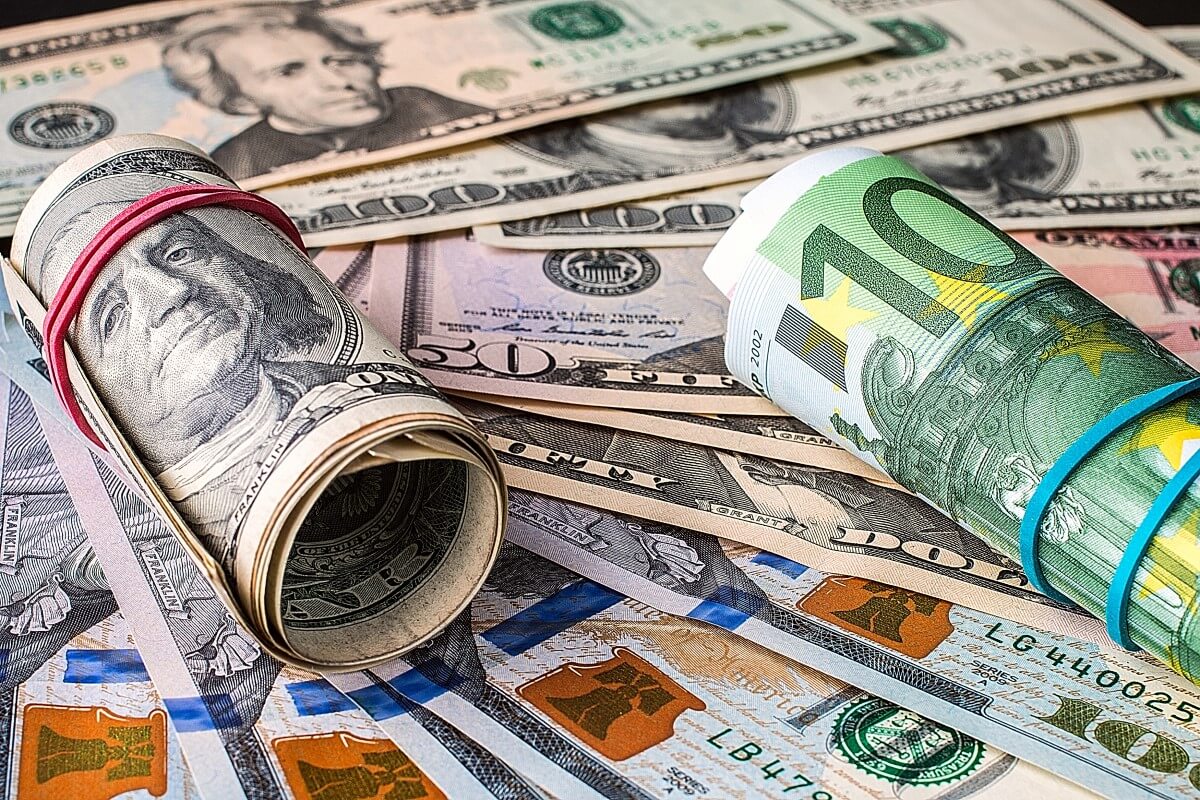
U.S. dollar continued soaring while Euro fluctuated
The U.S. currency rallied on Thursday, its index climbing up by 0.2% at 109.90. On Wednesday, the greenback skyrocketed to its highest level since June 2002. Federal Reserve Chair Jerome Powell recently announced that the Fed would continue to hike interest rates. The agency is trying to hinder soaring inflation. Thus, it decided not to loosen monetary policy prematurely. Powell’s statement further supported the surging dollar today.
The European Central Bank also increased its interest rates by a record 75 basis points on Thursday. The bank pushed the deposit rate above 0% for the first time since 2012. After this news, the Euro jumped above parity against the greenback. However, it rapidly deteriorated after Fed Chair’s announcement.
Randy Frederick, the managing director of trading and derivatives at Charles Schwab in Austin, Texas, noted that Powell, as usual, reiterates the Federal Reserve’s job. Congress mandates the agency to maintain price stability, as well as employment. However, it seems that Powell’s primary concern is currently price stability. Frederick added that the latter could have a very negative impact on employment. Considering the incredibly low levels of unemployment, though, the Fed Chair is essentially declaring that there’s room for unemployment to increase without causing a big problem.
According to surveys, there’s an 87% chance that the Federal Reserve will increase rates by another 75 basis points at September’s meeting. Investors still prefer the dollar to other safe-haven currencies. It soared by 0.3% to 144.13 Japanese yen earlier on Tuesday. At the end of the session, the greenback hit a 24-year high of 144.99 yen.
How is the Euro faring?
The common currency tumbled down by 0.4% to $0.9966 today. The ECB contemplates continuing to hike rates to lower demand. The bank decided to focus on fighting against inflation. Meanwhile, the euro area is heading toward an economic recession. The winter will likely be brutal, with Russia cutting gas supply.
ECB President Christine Lagarde stated that the bank has more journeys to cover going forward. According to her, policymakers anonymously agreed on the need for a 75-basis point hike in hopes of lowering inflation to its 2% mid-term target.
While the Euro struggles, the Yen has lost much more due to recent USD strength. That’s partly due to its sensitivity to soaring long-term U.S. yields. Besides, the Bank of Japan is still stubbornly dovish. But the government thinks about taking measures to support its currency on the Forex markets. The authorities stated that Yen’s moves are showing excessive volatility, but they have yet to act to bolster the currency.
What about the EM currencies?
Oil exporter Colombia’s currency – the peso, surged forward by 0.3% on Thursday. In addition, Chile’s peso and Peru’s sol rallied, gaining 0.4% and 0.7%, respectively. Higher copper prices boosted these currencies.
Moreover, crude prices jumped after Russia threatened to stop gas and oil exports to some buyers. Iron ore futures also strengthened thanks to Zhengzhou’s statement in China. The latter stated that it would start building halted housing projects. That announcement somewhat alleviated investors’ concerns about weak steel demand.
On Thursday, Mexico’s peso plummeted. According to a report, inflation hit a more than two-decade high in Mexico in August. It skyrocketed by 8.70% last month, the highest point in almost 22 years. As a result, the peso dropped by 0.3%, and stocks shaved off by 0.2%.
Jason Tuvey, the senior EM economist at Capital Economics, thinks this report will prompt Banxico to deliver a third straight 75 bps rate hike this month. But it could opt for 50 bps given that Mexico’s economy is struggling.
Meanwhile, other major Latin American currencies traded in the green. But Brazil’s real gained the most due to rallying commodity prices. Broader Latam stocks also surged forward by 0.3% after mining giant Vale declared that it expects a 44% raise in global nickel demand by 2030.
Brazil’s real also climbed up by 0.8% on Thursday. Traders are waiting for an interest rate decision from Peru later today. Some of them expect a rate hike by 25 or 50 basis points. Even the soaring dollar wasn’t deterrent enough to halt the rally of Latam’s currencies.
However, Christian Lawrence, the senior cross-asset strategist at Rabobank, noted that the markets would likely see a lot of choppy price action due to various reasons, including the Fed’s interest rate decision and the impending crisis in Eurozone.




